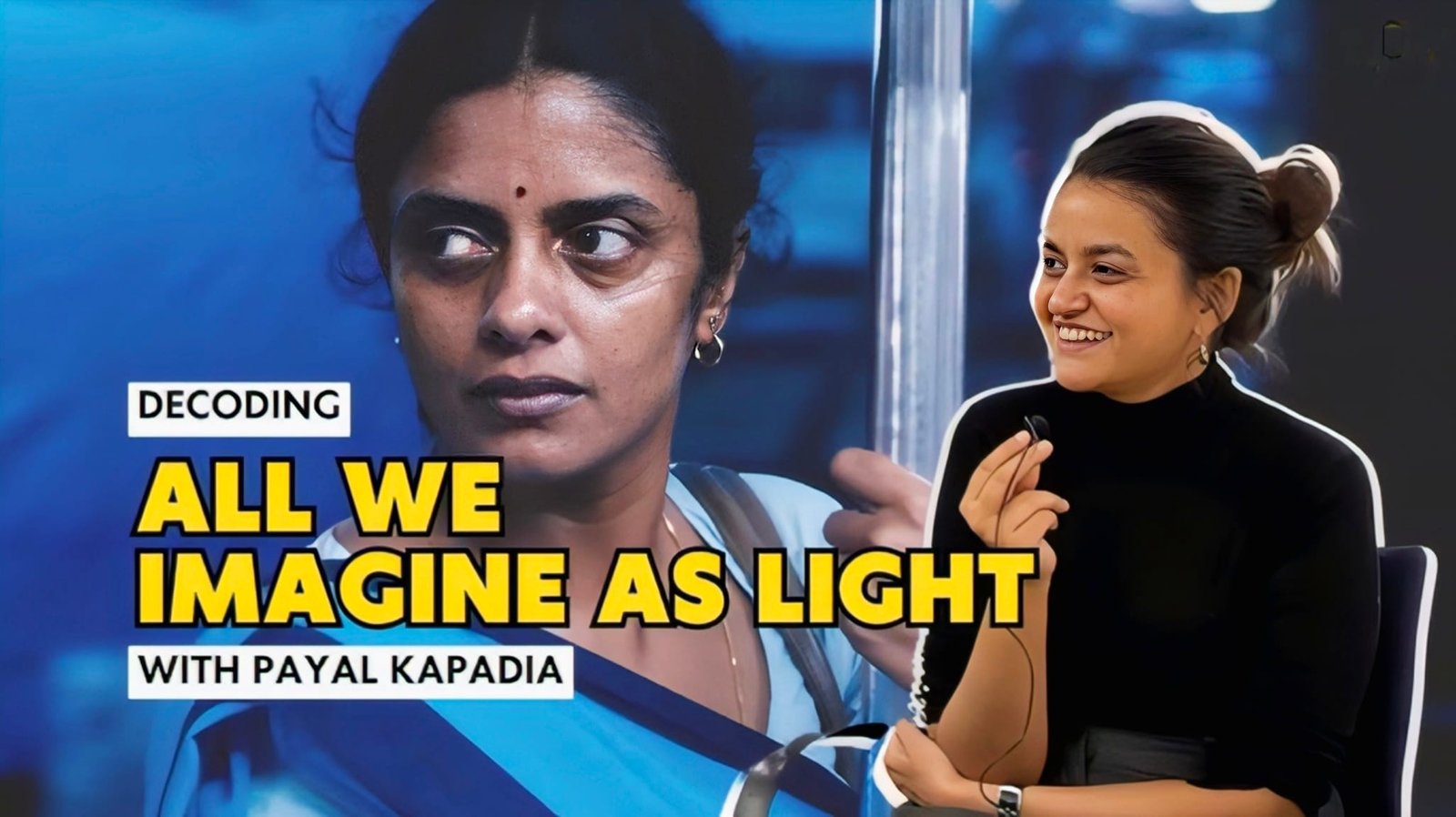All We Imagined as Light is one of those films that people were talking about for the last year, and by all accounts, by Payal Kapadia. As it was doing the rounds, both in critical precincts and amongst audiences, and making waves and taking home the Grand Prix at the 2024 Cannes Film Festival,
that sealed the end for the author of a well-deserved reputation of being an uncompromising filmmaker with a vision of her own. Despite the good reviews, the film has been criticized for its pace, narration, and general accessibility.
To some, it is the epitome of slow cinema; to others, it is a torture show of artistry.
A Story of Three Women and a City in Flux
The movie is a narration of three women and the city in motion, amidst the bustling yet isolating metropolis of Mumbai:
1. Prabha, the estranged nurse wife, needs to find solace in the emotional whirlwind of the unexpected gift that her husband has left for her.
2. Anu, Prabha’s younger roommate who fails to reconcile her relationship with her boyfriend amidst the inhibitions of being a roommate.
3. Parvaty, a widow faced with the threat of eviction, who would soon line up in a queue owing to fast urbanization encroaching the space around her.
Kapadia weaves the stories into one another through minimalism by extended scenes and minimal dialogue. The internal battle of the characters is reflected through the relentless rhythm of the city and alienation brought by it.
It does away with the normal narratives and digs into a more subjective portrayal of the characters, calling for patience and participation from viewers.
Pacing Dilemma: Contemplative or Monotonous?
Kapadia has been simultaneously flayed and acclaimed for the purposeful, meandering pace of her narrative. Long takes, ambient soundscapes, and low-key performances have become an important component of her art in finding quiet strength in her characters.
These elements, however, have also turned off some viewers, who have groused that the movie drags too slowly and lacks emotional investment in the storytelling.
Critics have been divided. Sheila O’Malley of RogerEbert.com says that the film’s “deliberate pacing requires patience,” admitting that it “may not resonate with all audiences.
” A review in Collider says that the film is more of an art to be appreciated than a story to be enjoyed, saying, “It’s a movie you appreciate rather than love.”
This duality speaks to a larger tension between art-house cinema and mainstream expectations. As much as cinephiles and critics celebrate the experimental storytelling, general audiences might find it less accessible, making the film appear overrated or monotonous.
Critical Acclaim and Recognition
The critical reception is very positive though polarizing; All We Imagine as Light scored 100 percent on Rotten Tomatoes with a rating average score of 4.5/5 from the 20 critical reviews.
Specifically, critics have enjoyed that Kapadia shows an acumen for urban texture and an obsessive commitment to a cinematic style.
The film fared well during its screening at Cannes. It secured Best Director and Best Motion Picture in a Non-English Language nominations for the 2025 Golden Globe Awards.
Though it lost in the two, that was all that was needed to showcase recognition of the industry of the fact that Kapadia’s talent was real and that artistic value worked in its favor.
Box Office Performance: Niche Appeal
The film is financially the same as it reflects its art-house nature. Up to December 2024, it has earned approximately $1.77 million. That consists of $285,113 in domestic markets and $1,489,352 internationally.
Modest figures make sense for the limited release plan, with its aim on selective demographics instead of a large target audience.
Its success at the box office around the world speaks of its resonance with audiences globally who have exposure to art-house cinema. In India, the reception speaks of the struggles involved in piercing the dominant mainstream market.
Audience Reception: A Spectrum of Opinions
The film has generally been well-worth praise in the critics. However, its reception among the viewers was divided. The film has earned a score of 75/100 from Metacritic based on reviews. Its users average a score of 6.5/10, a more mixed end.
Some viewers can even consider the film as “an endurance test” for its exceedingly sluggish rhythm and ambiguous storyline.
However, there are also those who revel in its meditative qualities and the depth of the character portrayals. This division simply shows that cinematic appreciation is very subjective-those qualities that attract one audience may repel another.
Artistic Intent: A Picture of Life in the City
Kapadia is rather realistic, too, with an insight into introspective approaches to filming. Natural performance, subdued light, and ambient sounds take audiences deep into the lives of a character.
Aesthetics, which are applied during film making—the static shots for extended silences, are added weight to how heavy their battle is and so bring the element of closeness and truth in.
Kapadia’s story of Mumbai also holds equal value. The city is not just a backdrop, but it is rather a character which has its share of tensions between development and displacement. Through her vision, Mumbai reflects the microcosm of modern day urban life. Personal dreams mostly clash with larger systemic forces there.
A Niche Film
Kapadia solidifies All We Imagine as Light in the art-house space of cinema through its cinematic choices: heaving introspection and slow pacing focused on thematic development, which may appeal only to a niche segment.
The niche character of that segment of viewers who may appreciate more experimental storytelling above the conventional may not have translated to a wider acceptability to wider audiences.
This duality leads to essential questions about cinema: is the point of the movie to achieve a broad, sweeping appeal or does it suffice that the film makes deep contact with an elite? Kapadia’s film indicates that both routes are valuable-even when they are not concurrent.
Over the Divide
All We Imagine as Light is a bold, boundary-pushing cinematic vision and an important declaration by Payal Kapadia about the commitment of filmmaking towards challenging traditional modes of storytelling and finding an essential narrative that offers poignant commentary on the lives of today’s people in Mumbai.
These are the qualities for which it is overrated and emotionally distancing for some critics.
It demonstrates how film reception is subjective: critical acclaim does not automatically correlate with an audience’s participation.
If one can accept All We Imagine as Light’s deliberately paced and reflective mood, it’s very richly rewarding. Others may just find it to be an incomprehensible piece that never even emotionally connects.
In the final count, Kapadia’s film urges us to reflect on these various ways to experience and construe art while reaffirming the value in keeping places around for experimental storytelling itself,
as though it were challenged by audience receptions in this aggressively commercialized entertainment industry.
Stay Connected and Share Your Stories
For all those inspired by stories of resilience and ambition, follow us on X/Twitter and on Instagram . For those with untold stories that you would love to share, please send them to contact@thephilox.com




